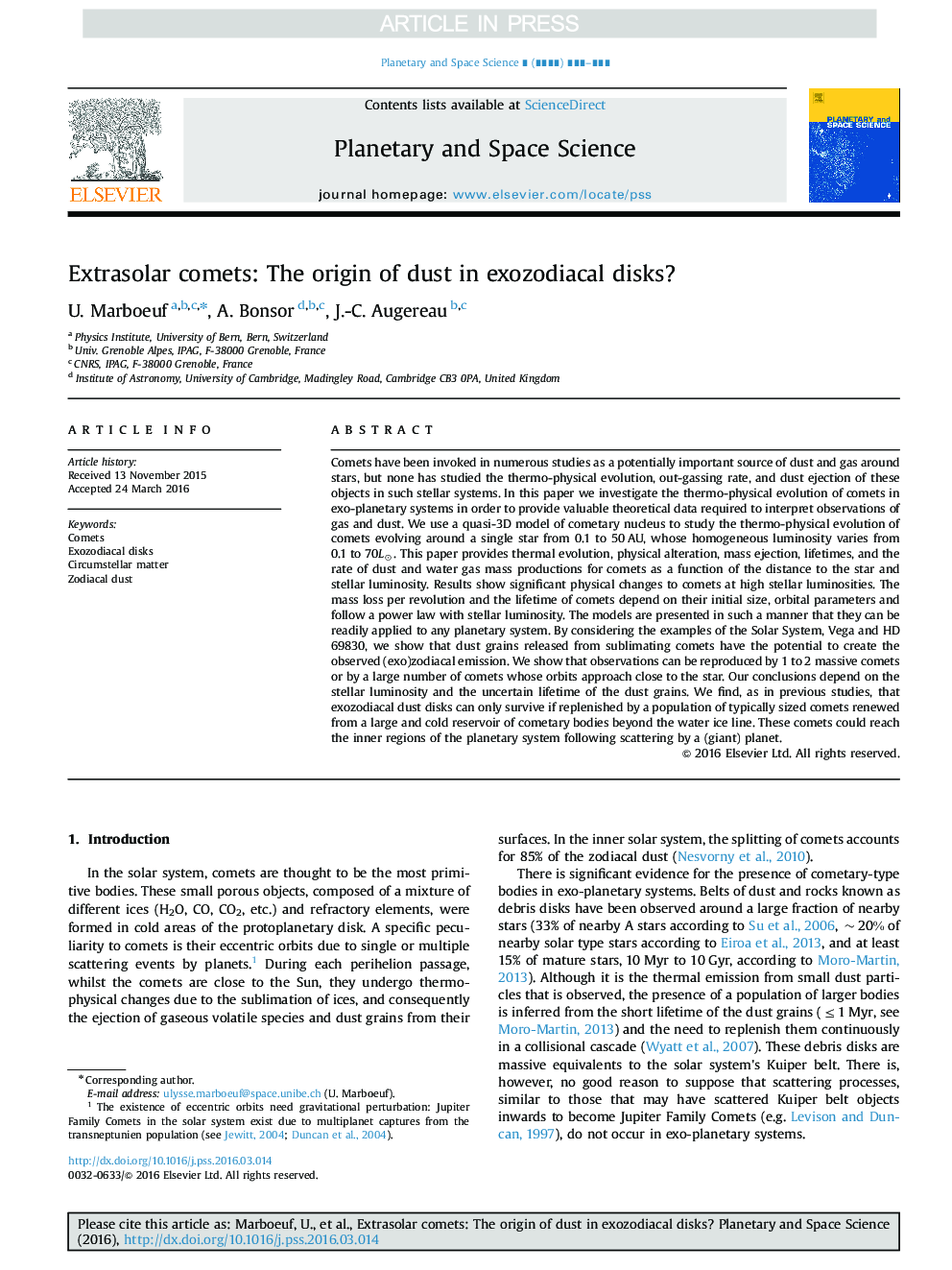| کد مقاله | کد نشریه | سال انتشار | مقاله انگلیسی | نسخه تمام متن |
|---|---|---|---|---|
| 5488060 | 1523907 | 2016 | 16 صفحه PDF | دانلود رایگان |
عنوان انگلیسی مقاله ISI
Extrasolar comets: The origin of dust in exozodiacal disks?
دانلود مقاله + سفارش ترجمه
دانلود مقاله ISI انگلیسی
رایگان برای ایرانیان
موضوعات مرتبط
مهندسی و علوم پایه
علوم زمین و سیارات
فیزیک زمین (ژئو فیزیک)
پیش نمایش صفحه اول مقاله

چکیده انگلیسی
Comets have been invoked in numerous studies as a potentially important source of dust and gas around stars, but none has studied the thermo-physical evolution, out-gassing rate, and dust ejection of these objects in such stellar systems. In this paper we investigate the thermo-physical evolution of comets in exo-planetary systems in order to provide valuable theoretical data required to interpret observations of gas and dust. We use a quasi-3D model of cometary nucleus to study the thermo-physical evolution of comets evolving around a single star from 0.1 to 50Â AU, whose homogeneous luminosity varies from 0.1 to 70Lâ. This paper provides thermal evolution, physical alteration, mass ejection, lifetimes, and the rate of dust and water gas mass productions for comets as a function of the distance to the star and stellar luminosity. Results show significant physical changes to comets at high stellar luminosities. The mass loss per revolution and the lifetime of comets depend on their initial size, orbital parameters and follow a power law with stellar luminosity. The models are presented in such a manner that they can be readily applied to any planetary system. By considering the examples of the Solar System, Vega and HD 69830, we show that dust grains released from sublimating comets have the potential to create the observed (exo)zodiacal emission. We show that observations can be reproduced by 1 to 2 massive comets or by a large number of comets whose orbits approach close to the star. Our conclusions depend on the stellar luminosity and the uncertain lifetime of the dust grains. We find, as in previous studies, that exozodiacal dust disks can only survive if replenished by a population of typically sized comets renewed from a large and cold reservoir of cometary bodies beyond the water ice line. These comets could reach the inner regions of the planetary system following scattering by a (giant) planet.
ناشر
Database: Elsevier - ScienceDirect (ساینس دایرکت)
Journal: Planetary and Space Science - Volume 133, 15 November 2016, Pages 47-62
Journal: Planetary and Space Science - Volume 133, 15 November 2016, Pages 47-62
نویسندگان
U. Marboeuf, A. Bonsor, J.-C. Augereau,